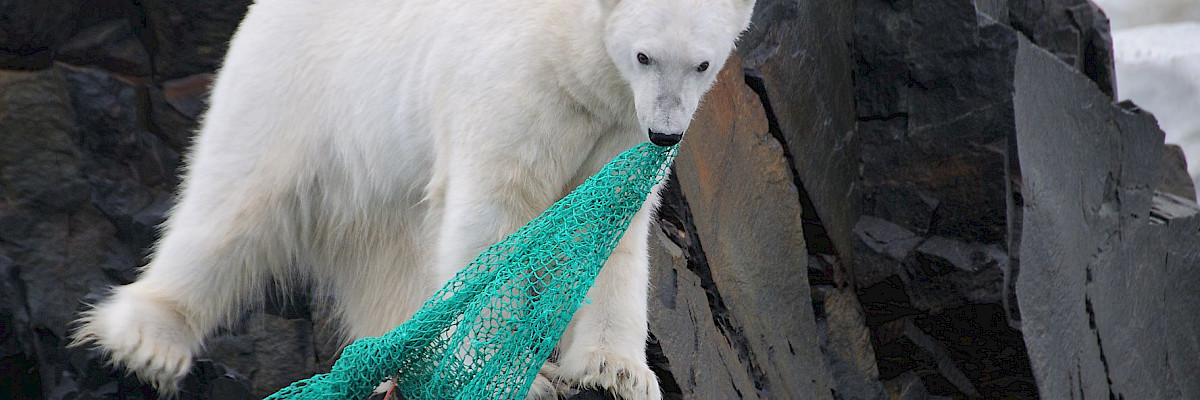
Arctic Marine Litter
Marine litter, particularly when made of plastic, is one of the more challenging problems affecting the marine environment globally. Plastics account for 72% of all marine litter in the world ocean. The remaining percentage includes paper, wood, textiles, metal, glass, ceramics, rubber and any other material that does not degrade within days or months.
It is estimated that more than 150 million tonnes of plastics have accumulated in the world's oceans since the onset of industrial production in the 1950s. Each year, the equivalent of over 525,000 truckloads of plastic enters our oceans. At predicted rates, which are increasing, plastics in the ocean is estimated to reach approximately eight million tons of plastic waste and to outweigh fish pound for pound by 2050.
The presence of litter in the oceans is felt everywhere. It has been recorded from coastal shallow waters to the seafloor of deepest oceanic trenches and basins. Litter can be deliberately discarded or abandoned in the sea; brought indirectly to the sea by rivers, sewage outfalls, storm water or wind; or accidentally lost. Gear or parts of it can be lost at sea because of wear and tear linked to normal operations, due to negligent practices and/or bad weather.
We have failed in our stewardship and responsible disposal of plastic products and effective instruments and management practices are required to address a universal challenge that consistently grows at an alarming rate. No single country can successfully tackle plastic pollution but rather this requires joint international efforts, including the option of a global agreement to prevent plastic pollution under the auspices of the United Nations Environmental Programme. Additionally, a radical rethinking of the production and use of plastic products as well as waste management systems, is imperative. This in turn requires science-based policy- and decision making as well as support for innovative solution.
The Arctic is to a large extent covered by ocean and most Arctic communities base their livelihoods on ocean-based activities. Very little is known about the effects of litter and microplastics, but litter is an important issue that has been addressed to some extent by five of the Arctic Council´s six Working Groups. At the Reykjavík Ministerial Meeting in May 2021 the Arctic Council adopted the Marine Litter Regional Action Plan developed by the Arctic Council Working Group PAME and the AMAP Litter and Microplastics Monitoring Plan.
The two plans are intended as a means to provide Arctic countries with guidelines that will make it easier for them to assess how much plastic litter is in their marine environment. The Action and Monitoring Plans are an important step in moving forward on implementation of more effective monitoring leading to better information on which to base further policy development. The plans may put the region at the leading edge of addressing marine litter as it goes beyond marine monitoring to include ecosystem-level monitoring.
Some barriers exist such as lack of precise information, differing resources for addressing the issues within the region and between countries as well as the variation of type of pollution within the region. These may require different solutions for different parts of the Arctic. Further, the Arctic environment, weather conditions, seasonal inaccessibility and remoteness makes activities such as monitoring challenging. Moreover, information concerning sources of pollution and pathways to the oceans presents significant challenges.
Compiled from the report from the 1st International Symposium on Plastics in the Arctic and Sub-Arctic & the Marine Litter Regional Action Plan.
Plastic in a Bottle: Live map
 Arctic Council Working Group
Arctic Council Working Group